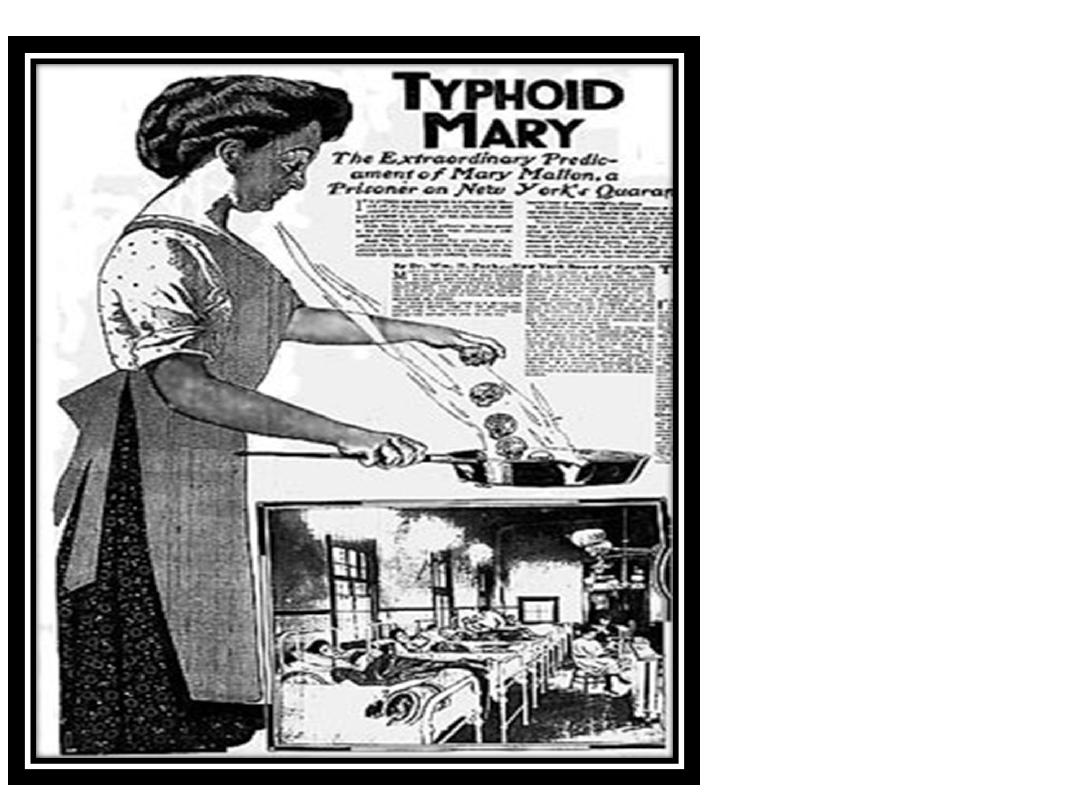
Practical Immunology and
Serology
Hawler Medical University
College of Health Sciences
Clinical Biochemistry Dept.
Ass. Lec. Amer Ali Khaleel
(M.Sc. Clinical Immunology)
Lab.3 :
Widal test
Copyright © 2016

Introductio
n:
• Widal test is a serological method to diagnose enteric or typhoid
fever that is cause by the infection with pathogenic
microorganisms like
Salmonella typhi
,
Salmonella paratyphi
a, b
and c.
• The method of diagnostic test is based upon a visible to the
naked eye agglutination (clumps) reaction between antibodies of
patient serum and antigens specifically prepared from
Salmonella
sp (KIT).
• Salmonella
possess the following 3 antigens:
• Flagellar antigen or H antigen
• Somatic antigen or O antigen
• Surface antigen or Vi antigen

Introduction: (cont.)
• The tests measure agglutinating antibodies directed against
a
Salmonella O somatic
surface antigen and/or
a
Salmonella H flagella
antigen of the suspected organism.
• The Widal test detects antibodies against O and H antigens.
• Type of techniques is use direct agglutination.
• Widal test, firstly descried by
Fernand Widal
in 1896.

Clinical manifestation:
•Chest congestion
•Constipation
•Diarrhea
•Feel week
•Gastroenteritis
•Headache
•High temperature
•Loss of appetite
•Stomach pains
•Weakness

Modes of
transmission :
•Ingestion of contaminated food or water.
•Rarely , from person to person – fecal-oral route.
•Food handlers/ Carriers.

Serodiagnosis of Typhoid
No.
Methods
Time
Consuming
1
Widal test by Rapid Slide (Screening) test
1 min
2
Widal test by Tube Agglutination test
2-4 hours
3
Typhidot Tests (IgG/IgM rapid test) by Chromatography
15 minutes
4
Tubex TF
10 minutes
5
ELISA (Enzyme-Linked ImmunoSorbent Assay) (IgG/
IgM)
45 minutes –
2 hours
6
ECL (ElectroChemiluminescent immunoassays) (IgG/ IgM)
45 minutes –
2 hours
7
PCR (Polymerase Chain Reaction)
7-10 days
The rapid slide test is widely used in private laboratory and hospitals in Hawler. PCR an excellent tool
for the early diagnosis of typhoid, due to its very high sensitivity and specificity.

Principle of Widal
test:
•Antibody in the serum produced in the response to
Salmonella
organism, the kit contains antigen
suspensions that are killed bacteria and they were
stained to enhance the reading of agglutination
tests.
•The
blue
stained antigens are specific to the somatic
antigens (O-Ag), while the
red
stained antigens are
specific to the flagella antigens (H-Ag).

Materials And Reagents Provided With The
Widal Kit:
•Antigen suspensions (specifically prepared from
Salmonella
sp.) 8 Antigens: O, H,
AO
,
AH
, BO, BH,
CO
,
CH
.
• Positive control (Vial).
• Negative control (Vial).
• Instruction for use (leaflet).
• White Glass slide.
• Stirring Sticks.

Widal
controls:
Widal negative control (-)
•Contains no antibodies against the specific bacteria.
Widal positive control (+)
•The widal positive control contains ready to use standardized goat
antiserum with polyspecific antibodies having specific reactivity towards
S. typhi O and H antigens, S. paratyphi AH and BH, S. paratyphi AO and
BO, S. paratyphi CO and CH antigens and is useful in the validation of
the performance of Widal reagents.

Notes
:
1- A positive and negative control should be run with each test.
2- If the reagent fails to agglutinate with the positive control, or
dose agglutinate with the negative control, it should be discard or
review the procedure and repeat the test with a new test device.
If the problem persists, discontinue using the test kit immediately
and contact your local distributor.
3-Before started the Widal test EXCLUDE these types of antigens
suspension especially AO, AH, CO, CH because these serotypes is
not present in Kurdistan region.

Additional materials and reagents
required for the febrile agglutinins
test:
•Applicator sticks (glass rod or wooden).
•Automatic pipettes or plastic droppers.
•Laboratory alarm clock or Timer.
•Glass plate or card plastic slide or disposable test
slide or reaction slides with white background.

Rapid Slide
(screening) Test:
• Slide Widal test is more popular as it gives rapid results.
Producers:
1- Place 1 drop (or transfer 50 µl) of the serum patient into
each of circle slide.
2- Add 1 drop of well shake Ag. O, H, B (O) & B (H)
respectively into each circle.
3- Spread the contents to fill the whole circle area.
4- Mix & rotate the slide for 1 minute & observe for
agglutination.
5- Report the result.

Observation and
Result:
• No agglutination = Negative
• Result reported as ‘
titres’
: Highest dilution where agglutination is
seen:
• If agglutination appear after 15 seconds = (1:640)
• If agglutination appear after 30 seconds = (1:320)
• If agglutination appear after 1 min. = (1:160)
• If agglutination appear after 1.30 min. = (1:80)
• This test is a screening test only for the detection of Widal agglutinins.
If result is positive it must be confirmed by other serological tests for
Widal.

Interpretatio
n:
•Salmonella typhi O
(+ve mean recent (acute) infection).
•Salmonella typhi H
(+ve mean old (chronic) infection).
•Salmonella paratyphi bO,bH
(+ve mean carrier can infect other).
•Test results need to be interpreted carefully in the light of past history
of enteric fever, typhoid vaccination, general level of antibodies in the
populations in endemic areas of the world.

Limitations of Widal test:
• The Widal test has a very low specificity, less sensitive, confusing
and difficult to interpret for the diagnosis of typhoid f ever,
because cross-agglutinating antibodies remaining from past
infections with related salmonella serotypes give
false-positive
results
.
• Furthermore, in areas where fever due to infectious causes is a
common occurrence. So
false positive reactions
may occur as a
result of non-typhoid.
• In spite of several limitation many Physicians depend on Widal
Test.

Causes Of False-positive Widal
Agglutination Tests:
1. Previous immunization with Salmonella antigen.
2. Cross-reaction with non- typhoid Salmonella.
3. Variability and poorly standardized commercial
antigen preparation (kit).
4. Infection with malaria.
5. Other Enterobacteriaceae sharing the same s-LPS .

Why We Still Use Widal Test
or
Widal A Deleted Test In Many Nations
• The Widal test is an old serologic assay for detecting antibodies
to the O and H antigens of salmonella.
• Although the test is no longer performed in the U.S. or other
developed countries, it is still in use in many developing
countries because of its low cost and limited resources require
the use of rapid
, and it remains in use in many areas throughout the
world.

Prophyla
xis:
1. Simple hand hygiene and washing can reduce several
cases of typhoid.
2. All milk and dairy products should be pasteurized.
Summary:
• It is conclude, that even today, the Widal test remains
one of the best, easily accessible, cheap and simple
method for the diagnosis of typhoid fever.

1- Trying to drawing of blood sample from your colleagues.
2- Preparation of serum.
3- Do
Widal test
for your colleagues.
4- Report the result and interpretation.
Practical Part

An
y
Q
ue
st
io
ns
?
?!
!!
